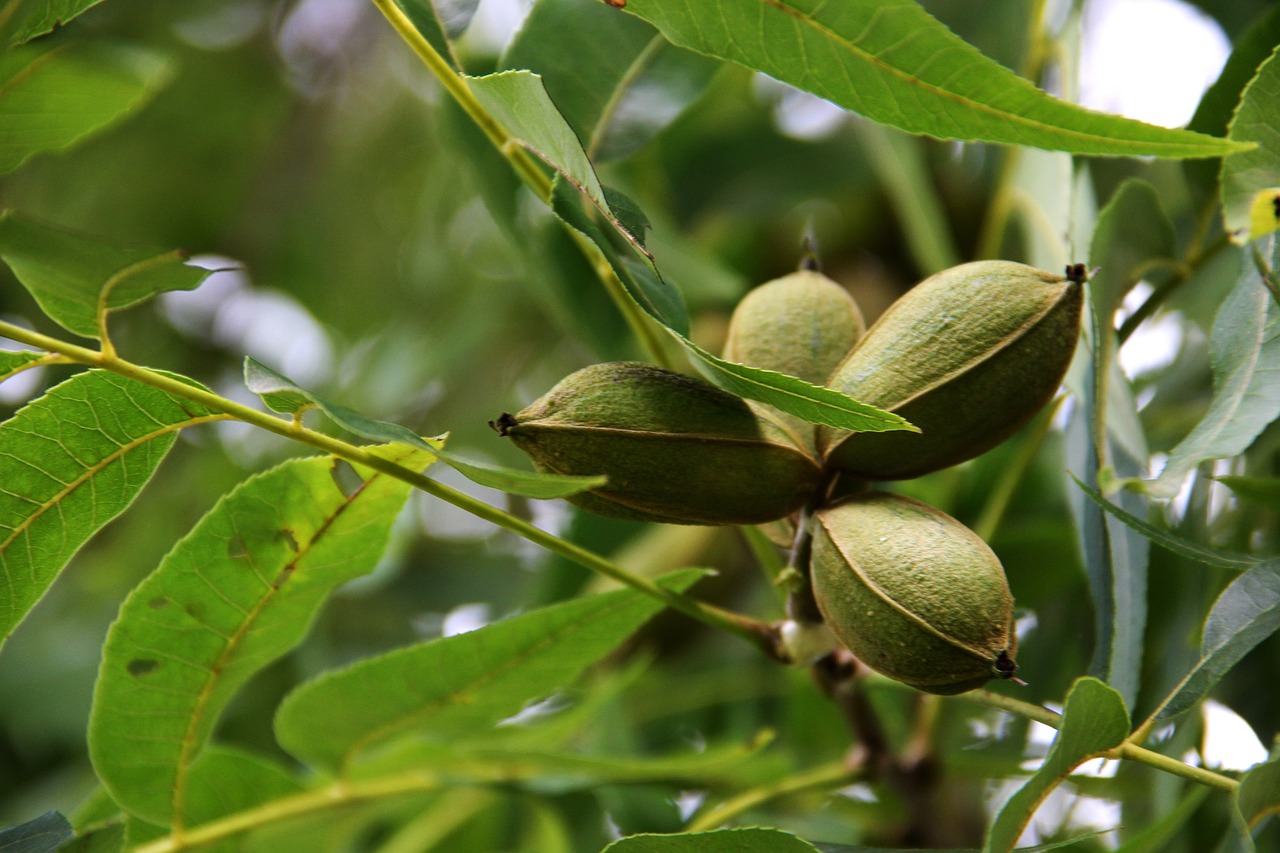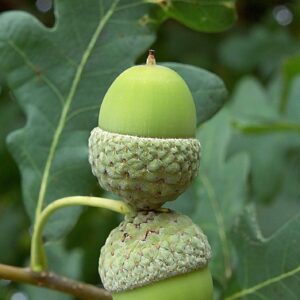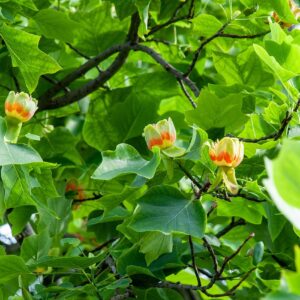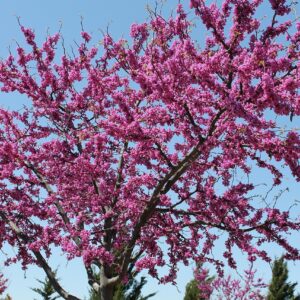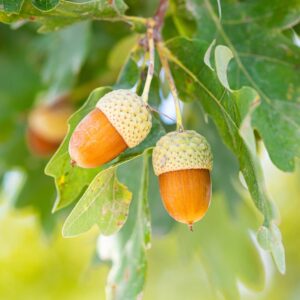Carya illinoinensis, commonly known as the Pecan Tree, is a large deciduous tree native to the central and southern United States. It is renowned for its nuts, which are valued both commercially and for personal consumption.
Appearance:
Size: Pecan trees typically grow 70-100 feet (21-30 meters) tall with a spread of 40-75 feet (12-23 meters). In ideal conditions, they can sometimes reach heights of up to 150 feet (45 meters). They have a broad, spreading canopy with a dense, rounded form.
Leaves: The leaves are pinnately compound, with 9-15 leaflets per leaf. Each leaflet is lance-shaped and measures about 4-7 inches (10-18 cm) long. The leaves are dark green on the upper surface and lighter green underneath, with a smooth or slightly serrated edge. In the fall, the foliage turns yellow, offering seasonal interest.
Flowers: Pecan trees are monoecious, meaning they have separate male and female flowers on the same tree. The male flowers are catkins—long, slender, pendulous clusters that appear in early spring. The female flowers are small, inconspicuous, and are found in clusters at the tips of new shoots.
Fruit: The fruit is a drupe known as a pecan nut, encased in a hard, woody shell with a smooth surface. The shell is covered by a green husk that splits open when the nut is ripe. Pecans mature in the fall and are known for their rich, buttery flavor. The nut is edible and used in a variety of culinary applications.
Bark: The bark is grayish-brown and becomes deeply furrowed with age, forming a somewhat ridged and scaly texture.
Habitat: Pecan trees thrive in a range of environments, including bottomlands, floodplains, and well-drained upland soils. They prefer deep, fertile soils with good moisture retention. While they are adaptable, they do best in USDA Hardiness Zones 6 to 9.
Uses:
Culinary: Pecans are a popular nut used in a variety of dishes, including pies, candies, and savory recipes. They are also enjoyed raw or roasted as a snack.
Ornamental: Pecan trees are valued for their large size, shade, and attractive foliage. They are often planted in large landscapes and as shade trees in residential and commercial settings.
Economic: Pecan cultivation is a significant agricultural industry, particularly in the southern United States. Pecans are grown commercially for their nuts, which are sold fresh, roasted, or processed into various products.
Ecological: The tree provides habitat and food for wildlife. The nuts are consumed by squirrels, birds, and other animals, while the tree’s canopy offers shelter and shade.
Care:
- Pruning: Prune pecan trees in late winter or early spring before new growth begins. Pruning helps maintain the tree’s shape, removes any dead or damaged wood, and can improve air circulation within the canopy.
- Watering: Pecan trees require regular watering, especially during dry periods. They prefer consistently moist soil but can tolerate brief periods of drought once established.
- Fertilizing: A balanced, slow-release fertilizer applied in early spring supports healthy growth and nut production. Soil testing can help determine the specific nutrient needs.
- Pests and Diseases: Pecan trees can be affected by pests such as pecan weevils, aphids, and leaf scorch, as well as diseases like pecan scab and fungal infections. Regular monitoring and proper care can help manage these issues.
Carya illinoinensis (Pecan Tree) is a valuable and versatile tree known for its delicious nuts, shade, and ornamental appeal. Its adaptability and significant economic value make it a popular choice for both commercial and residential planting.

